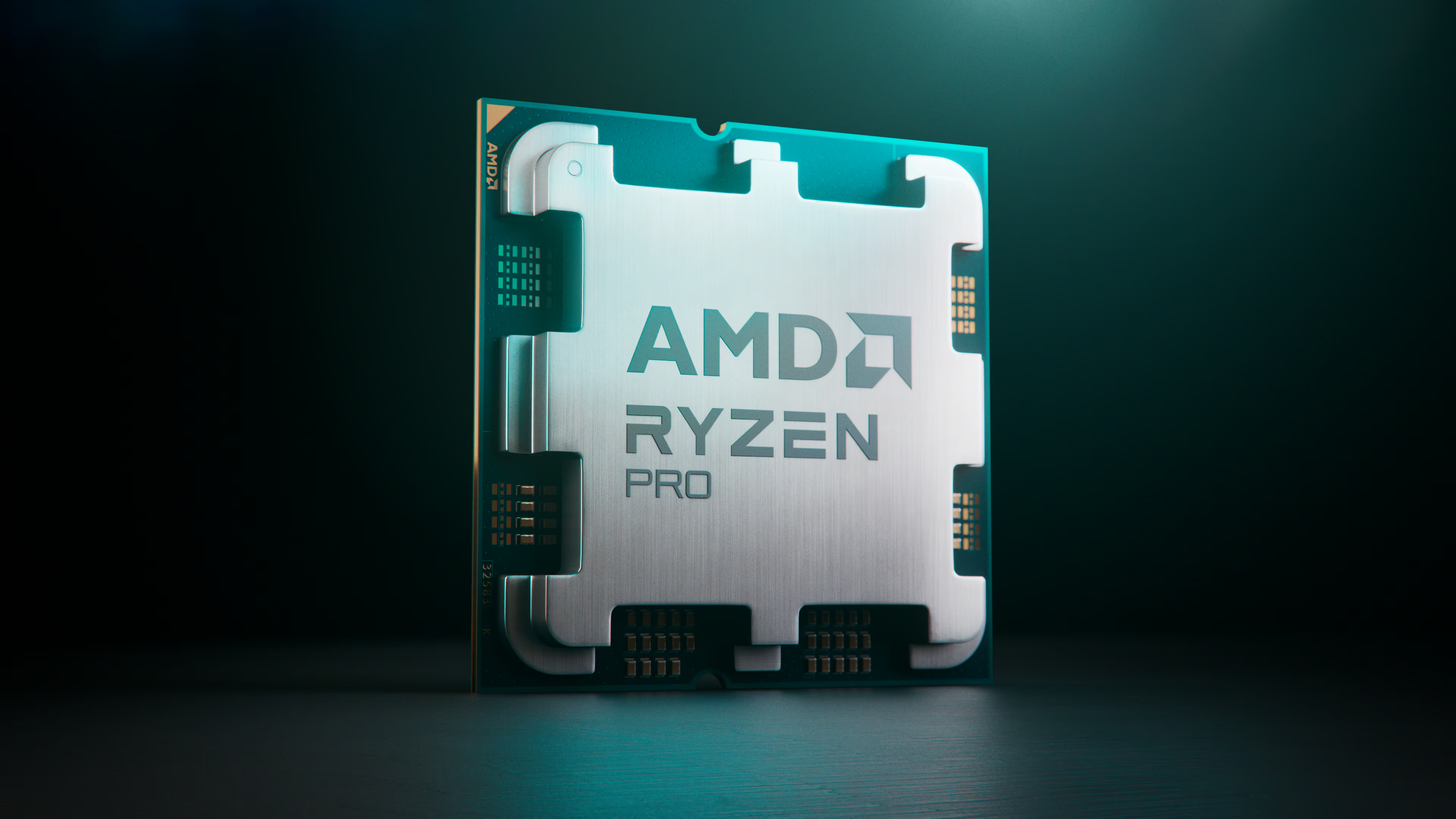1. Hi everyone! I’m in San Francisco, and I’ve been here for the launch of new processors used in data centre computers, and new chips used to enhance generative AI technologies
2. AMD launched more powerful chips in several areas: in servers, in desktop and laptop computers, and they are absolutely state-of-the art, coming with major improvements in performance and power efficient compared with previous models.
AMD also has brand new AI chips that have the power to let companies easily run their own ChatGPT like system and offer services to its customers, should they wish to, or use the AI smarts in improving their own operations, as well as new Ryzen AI-enhanced processors that add an AI-equivalent to the Neural Core you see on Apple’s A and M series chips, and in Qualcomm’s smartphone and desktop-class mobile processors, and in Google’s Tensor processors, with the other processor companies also doing the same to varying degrees.
Here are the highlights of the event, the full video of the keynote launch is further below too:
This new Epyc 97×4 processor range dubbed Zen 4c, is for widespread deployment in new or upgraded fleets of servers in data centres, in what AMD is calling “No compromise cloud native computer” letting those companies serve more content at faster rates while providing services to all the tech companies out there that provide services to users on the Internet and in apps.
In November last year, the new range then had 96 cores, this year’s version has 128 cores for even better performance, with 2.7x better energy efficiency than November 2022’s models, supporting up to 3 more containers, which means more sessions of processing even more user data ever faster and in real time, while incredibly letting data centres save even more money on energy costs an ongoing basis than with the older tech – and all by replacing one CPU processor on the motherboards of their servers, if they upgraded last November, with this new one.
Or upgrading from older tech where your computing power boost will be comparatively ENORMOUS!
There’s also new Ryzen 7050 processors with AI that you’ll find in brand new desktops and laptop computers out there. Ryzen is AMD’s version of the Intel Core i3, i5, i7 and i9 processors, and AMD have beaten Intel, yet again, but this time in delivering processors with an AI core, like Apple and Qualcomm’s smartphone, tablet and computer processors have, but which major competitor Intel has announced but not yet released.
The dedicated AI accelerator hardware is part of the actual chip, and it works to intelligently optimise tasks and workloads, CPU and GPU resources are freed up to ensure optimal performance. But AMD is also using Ryzen’s new AI capabilities for more than raw performance or power efficiency, but new experiences, at least for PC users.
Ryzen’s AI processors will deliver the kinds of experiences iPhone, iPad and Mac users take for granted – AI that puts you at the centre of the live video conference, and they’ve called it “Automatic Framing” to Apple’s name of “Centre Stage”, and it automatically expands and contracts the video image zoom area as you move around, or other people join or leave your video chat.
You can also blur the background or add in other virtual backgrounds even more smoothly than Zoom can do it using the AI enhancements built right into the processor, and finally, and most importantly, “eye correction”. This lets you maintain eye contact, even when you don’t; this amazing new feature makes it look like your eyes are meeting your audience’s as much as possible. I remember Apple talking about this for its FaceTime app some time ago, but I don’t actually know if Apple is delivering that – I’ll have to check – but even so, Windows computers powered with this new specific range of Ryzen 7040 variants that come with enhanced AI-powers are now possible thanks to AMD’s development.
Finally, AMD introduced the world’s Most Advanced Accelerator for Generative AI. Generative AI is what ChatGPT, Bing AI chat and Google Bard delivers, ut AMS’s new AMD Instinct MI300 Series accelerator family, including the MI300X accelerator, all the power needed to provide the compute and memory efficiency needed for large language model inference and generative AI workloads. This means companies can now add servers to their data centres which are purpose built to now fit large language models such as Falcon-40B, a 40 billion parameter model, on a single MI300X GPU accelerator.
AMD also introduced the AMD Infinity Architecture Platform, which brings together eight MI300X accelerators into an industry-standard design for the ultimate in generative AI inference and training. The MI300X is sampling to key customers starting in Q3. AMD also announced that the AMD Instinct MI300A, the world’s first APU Accelerator for HPC and AI workloads, is now sampling to customers. If you thought AI was growing at super fast speeds, these are the types of technologies being used to massively accelerate it.
3. Google has announced its latest Feature Drop for its Pixel smartphones and watches, what are the new capabilities?
New pixel features for phone and watch. Pixel 7 Pro gets new Macro mode focus for recording videos of bees on flowers or other small things you want to capture clearly and in focus.
Here’s the short promo video (more info below):
New cinematic wallpapers that , a new emoji workshop app so you can craft your own, a better look at your heartbeat with high and low heart rate notifications, oxygen levels with SpO2 blood oxygen tracking, better safety check and emergency sharing that improves car crash detection, (but no satellite emergency SOS network access as with the iPhone 14 yet) and Google says its a phone that keeps getting better.
Apple would argue it does all of this too, with Google and Samsung the best at keeping up wth Apple, although Apple outsells them handily and without needing special sales either, but hey, competition is good and it’s great to see companies meeting and trying to beat Apple’s high-bar standards.
You can see more details here.
4. On a separate note, Gmail has launched a new feature called “Help me write” to make composing emails faster and easier, so what are the other five AI-powered features that make Gmail more helpful across a wide range of tasks, from managing incoming mail to helping craft replies. Details here.
5. A new Beatles song is coming out, using AI to clean up John Lennon’s voice on an old, unreleased track. Here’s Variety’s article on the topic.
6. OpenAI, the company behind ChatGPT, has had Microsoft invest well over US $10 billion into the company, but while they do work together, they’re also separate companies and are competing, so what is the beef between the two tech titans? Here’s TechRadar’s view.
6. What did Steve Jobs say which predicted the Vision Pro headset, and why is it so striking?
7. Update Google Chrome now! There’s a good chance your Chrome browser hasn’t automatically updated itself! I use Safari on my Mac, and only use Chrome occasionally, so this is an update I personally needed to do, and have now done. Forbes has the details.
8. There’s a report that Elon Musk is refusing to pay some bills, with one reeport saying it’s Twitter’s Google Cloud bills, in a deal that was struck before Musk took over. Twitter is using some of Google’s anti-spam technologies and cloud services. Elon is also reportedly refusing to pay some Amazon Cloud bills as well, and in reported retaliation, Amazon is refusing to pay for its advertising bill on Twitter. Here’s an article on Medium about it.
Elon has made cuts totalling seemingly billions of dollars and 3/4 of the workforce, we with his $44 billion purchase he needed to do, and Elon is presumably trying to force the renegotiation of contracts his predecessors signed up to in an attempt to get a better deal, and being the creative genius type of guy you don’t want to be messing with.





